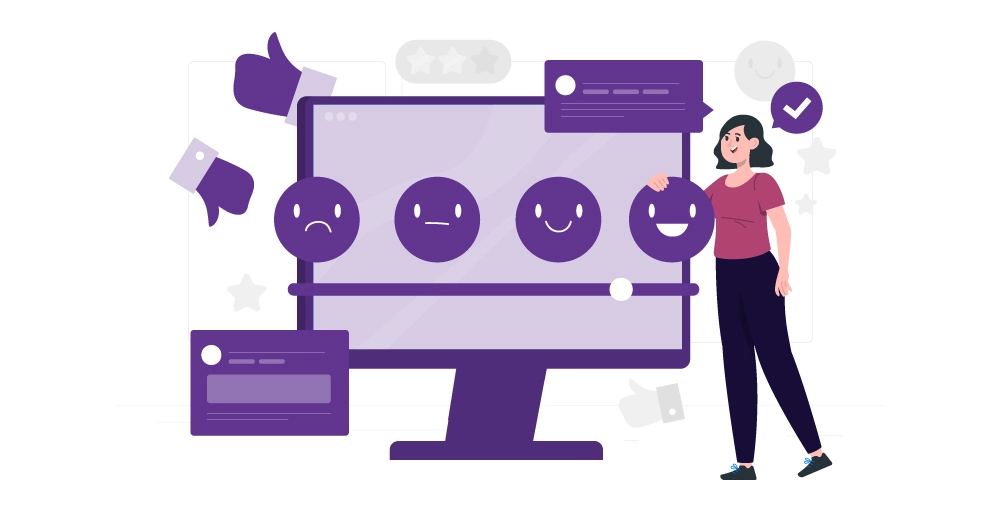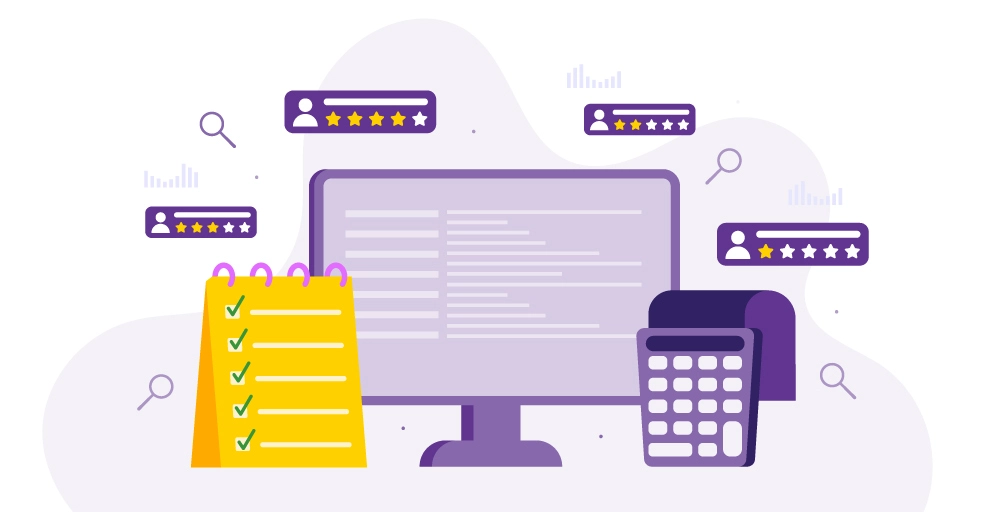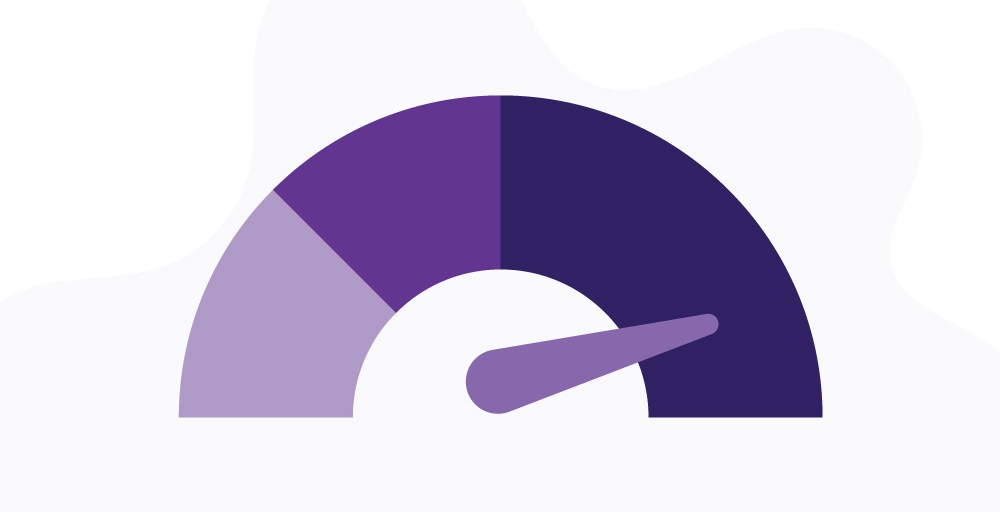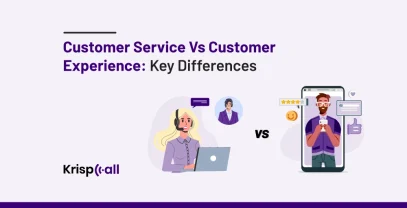Have you ever purchased a product and found it awful or amazingly good👌? If so, you might have left a review or feedback.
Answering survey questions, leaving feedback, rating products, leaving a review, etc. If you’ve done all these things, you’ve been a part of CSAT Metric ⚖️.
CSAT is performed to measure customer satisfaction level 💯 with the business’s products or services.
“How much do you rate this product? On a scale of 1-5, how satisfied are you?” These questions are primarily used to conduct surveys and gather data related to customers and their satisfaction levels.
In this article, we’ll learn about CSAT, its purpose, benefits, how and when it should be measured, and the pros and cons of CSAT.
🔑 KEY HIGHLIGHTS
- CSAT gathers feedback and surveys through customer interaction, online reviews, and ratings.
- The primary purpose of CSAT is to measure satisfaction levels and identify areas for improvement.
- Some benefits of measuring CSAT are improved customer retention, increased sales, word-of-mouth, brand loyalty, and enhanced product and service development.
- 75% to 85% CSAT score is considered good, but it may vary between industries.
- You should use CSAT after customer lifecycle moments, 6 months before renewal, and after customer support or education interactions.
- CSATs are simple and easy, provide insights for product and service improvements, and improve customer retention.
- CSAT has limited scope, the potential for biased responses, and the likelihood of inaccurate results.
What is CSAT (Customer satisfaction score)?
Customer Satisfaction Score (CSAT) is a business standard that measures how happy or satisfied a customer is with a company’s services and products. It is usually measured through a survey or customer feedback.

CSAT can be termed a customer relationship management technique that can improve customer satisfaction to some extent. Businesses prioritize CSAT as it guides their services or products to enhance and meet the customer’s satisfaction through valuable feedback.
CSAT Score generally measures customer satisfaction by gathering feedback, using a rating scale to rate satisfaction levels for products or services, online reviews, customer support interaction, etc. These are the primary tools and techniques to measure the CSAT Score. A CSAT Score between 75% and 85% is considered good but can vary between industries.
How Do CSAT Scores Work?
CSAT Scores work by measuring the satisfaction level of customers. It’s a valuable tool for understanding customer satisfaction and the performance of the business in general. CSAT Scores are essential for companies as they directly measure customer satisfaction with their services or products.
Imagine you run a bakery. How do you know if your customers love your pastries? You may directly ask the customer how good the pastries are or even help them rate your services. This allows you to gather feedback and improve the specific areas, as your customer mentioned. Likewise, Customers generally provide reviews or feedback on the services through surveys or feedback forms.
By asking customers to rate their experience on a scale of 1-5, where 5 is the most satisfied, you can gather valuable customer interest and insights that can help companies deliver satisfying services and products.
What Is The Purpose of Customer Satisfaction Score?
The primary purpose of CSAT is to measure customer satisfaction by calculating CSAT scores. This can be done by conducting surveys, gathering customer reviews and feedback, and engaging in customer support interactions.
Moreover, CSAT aims to achieve several objectives by helping you obtain customer satisfaction or gather data to improve your business’s services. It mainly focuses on understanding how well a customer is satisfied with the provided services. Let’s learn more about its purpose.
- Measure Satisfaction Level: One primary purpose of CSAT is that you can measure customer satisfaction with a product or service. Businesses ask customers through surveys, feedback, or interaction whether they are satisfied with their services.
- Identify Areas for Improvement: By conducting various surveys and maintaining customer interactions, you can gather customer insights about how satisfied customers are and, if not, what significant points have let them down. These methods provide you with sufficient customer requirements and help to specify areas for product and service improvement.
Benefits of Measuring Customer Satisfaction
Customer Satisfaction is usually measured so that companies can gain insights into their customers. This can help businesses understand where they excel and where they need to improve their services and products.
Let’s discuss some of the benefits of measuring customer satisfaction.
Improves customer retention
Businesses can understand customer satisfaction and deal with it closely by measuring customer satisfaction scores. Businesses can know where to improve and follow guidelines to address their customers’ concerns about their service.
As we know, if a brand provides good service, we will likely go back and buy their service again. That means customer retention can be easy for businesses if they know how satisfied their customers are with their service or products.
Increase Sales
A satisfied customer is likelier to make repetitive purchases and increase the business’s sales. They will be uniform with the brand and purchase products with the brand rather than trying other brand’s similar products.
Also, satisfied customers are more likely to recommend the products or services that they’ve been using to their close ones, which may increase the product’s sales.
Word-of-mouth
Word-of-mouth can help a business build a brand through its loyal customers. A satisfied customer can influence others to purchase a brand’s product or service. As a customer, we check for previous customers’ ratings or satisfaction levels with the product before purchasing.
A report says about 88% of customers trust online reviews and feedback. Social media plays a vital role as customer experiences are shared not only with our friends or close ones but also on the internet, which can influence other customer’s decisions regarding products.
Increase Brand Loyalty
If a business provides satisfying services to customers, they are more likely to be loyal customers. Businesses can closely monitor their customer satisfaction level, and if improvement is needed, they must consider meeting customer satisfaction.
Businesses can maintain or even increase their brand loyalty by providing quality services and improving customer satisfaction.
Enhance Product and Service Development
As customer satisfaction is measured, it provides businesses with insights into how well their product or services meet the customer’s intent. It can offer various data regarding where the company should focus and improve to meet the customer’s satisfaction.
After gaining proper data about their customer’s interests in their products, companies can make proper decisions to enhance their product or service development to satisfy their customers.
When Should You Measure CSAT?
CSAT is crucial for any business to improve customer satisfaction, so it is very important to measure it at clinical time. Measuring CSAT from time to time (e.g., quarterly, bi-annually, or annually) can help the company track the satisfaction score and identify areas for improvement.
CSAT surveys can be effective if used at the perfect customer interaction points. Conducting post-purchase surveys and taking reviews or feedback after the customer has used the product can be a crucial time to gather unbiased customer responses.
Customer Satisfaction Score Calculation: How Do You Measure CSAT?

Calculating customer satisfaction scores is far simpler than we think. Here’s the breakdown of CSAT Calculation in simpler terms.
- Measurement
CSAT is measured through various means of customer interaction, such as customer feedback, surveys, reviews, ratings, etc. Customers are usually asked, “How satisfied are you with the product? How do you rate your recent experience?” Customers usually score it on a scale of 1-10.
- Calculation
After measuring the data from the surveys or other customer interactions, you just add up the positive responses and then divide it by the total number of responses gathered and then multiply it by 100. This way, you can calculate the CSAT score, which is very easy.
What Is a Good CSAT Score?
The CSAT Score may vary between industries, so it cannot be specified whether this score is good or bad. Usually, a 75% to 85% CSAT score is considered a good score among various industries.
Each industry has a different average CSAT score based on its own benchmarks and guidelines.
Let’s take the hospitality industry as an example. This industry solely focuses on providing quality services and customer satisfaction. Customer service is prioritized to provide optimal customer satisfaction. A CSAT score above 85% is considered a good CSAT score in this industry.
Customer Satisfaction Score By Industry
The CSAT score can differ depending on the industry and its benchmarks. Various industries must follow practices or guidelines to get maximum CSAT scores.
According to the American Customer Satisfaction Index, let’s look at the CSAT scores of different industries.
- Fast Food Restaurants: 78
- Computer software: 76
- Wireless Phone Service: 74
- Internet Service Providers: 68
- General Merchandise Retailers: 77
- Drugstores: 77
- Banks: 80
- Automobiles: 79
When Should You Use Customer Satisfaction Score?
Customer Satisfaction scores (CSAT) can be used at various stages of the customer lifecycle or journey. To gather proper and accurate scores or data, it is very crucial to deploy the CSAT surveys or customer interactions at the correct moment.

1. After customer lifecycle moments
The best time to conduct a survey is after purchasing the product or service. Conducting a post-purchase survey can be beneficial as you can gain the proper insights about customer intent and how they feel about the product.
Sending a survey form or conducting an in-person survey after the customer lifecycle has been completed can help you gather accurate feedback about the product and whether it meets their needs. If not, it can provide valuable data regarding the area of improvement, which you can use to improve product and service development.
2. Prior to renewal
If a customer has already canceled your services, it’s too late to perform CSAT surveys. CSAT primarily focuses on maintaining customer retention, which helps raise sales and maintain customer loyalty.
It is essential to follow up with your existing customers regarding the services or products they’ve been using. The best time to conduct a survey is six months before their renewal period.
By performing a survey during this specific period, you can know whether the customers plan to renew or cancel the service. Even if the customers decide not to renew their service, you can propose new attractive plans to secure the customers.
3. After customer support or education interactions
After customer support or interactions, sending a customer satisfaction survey regarding the support is essential. This may help you to know how helpful customer support is and how likely they can help if any problem arises on the customer side.
Even though customer support or education interactions don’t come under the customer lifecycle, they can help you measure customer satisfaction and improve customer service.
CSAT Vs NPS: What Is The Difference?
Net Promoter Score (NPS) is generally an indicator that measures how likely a customer is to recommend a brand or business. As in CSAT, it is measured through a survey by asking customers if they are interested in recommending the products or services to other customers.
Here is the table that shows the differences between CSAT and NPS.
| Features | CSAT (Customer Satisfaction Score) | NPS (Net Promoter Score) |
| Focus | Measures satisfaction of customers | Measures the likelihood of a customer to recommend |
| Timing | Often conducted after customer interaction or survey | Can be conducted occasionally |
| Calculation | Percentage of satisfied customers | Percentage of promoters minus percentage of detractors |
| Use Cases | Use to identify areas of improvement | Use to measure overall customer sentiments |
| Data Provided | Provides data about customer satisfaction | Provides data about customer loyalty and their likelihood to recommend |
| Response Scale | Normally uses a numerical scale (1-10) | Uses a numerical scale (1-10) with three categories: Detractors (0-6), Passives (7-8), Promoters (9-10) |
Moreover, the survey scored on a scale of one to ten can be categorized into three terms.
- 0-6: Detractors (Customers that are likely to provide negative reviews)
- 7-8: Passive (Customers that like the product or brand but won’t recommend it)
- 8-10: Promoters (Customers that are likely to recommend a brand)
Pros and Cons of CSAT
As we know, customer satisfaction is the key to business success. If a bunch of customers leave good reviews for your business’s services, then your CSAT score might hike up. And If they aren’t satisfied with your services, they might leave negative reviews, which can help you improve products and services to maintain customer satisfaction. However, it has its own pros and cons that businesses have to deal with.
Pros of CSAT
Some of the Pros of CSAT are:
- Simple and Easy: CSAT is a straightforward technique for measuring customer satisfaction. Let’s take a restaurant as an example. You can ask a simple question like, “How satisfied were you with the food today?” that can provide you with general information about the food and customer satisfaction.
- Insights for product and service improvements: CSAT generally provides valuable details about what your customers think and if the certain products or services meet the customer’s requirements. This gives you enough details to maintain and improve the services.
- Customer Retention: Customer satisfaction is the major factor that attracts customers to come back. If a customer is wholly satisfied or delighted with their first purchase, then they are more likely to come back for the same product or service.
Cons of CSAT
Some of the Cons of CSAT are:
- Limited Scope: CSAT measures how satisfied customers are with the services or products, but it doesn’t measure overall customer sentiments and loyalty towards a brand. Thus, it provides a limited area for measurement.
- Subject to biased response: Even if the customers are satisfied with the services, they may give biased responses due to the odd timing of the survey or interaction, mood, or other factors.
- Likely to be inaccurate: CSAT surveys can be inaccurate, as many customers might not bother doing them, or the results may depend on the customer’s mood, timing, or bias.
High Customer Satisfaction Scores: A Path to Success
Customer Satisfaction scores play a great role in customer retention and loyalty. So, it is imperative to measure them accurately and take action based on the data gathered through CSAT.
CSAT surveys and other customer interaction methods can make the customers feel that they have been heard and that the business values their demands and interests. A business can prosper only if it has a loyal, satisfied customer base.
There’s a saying, “The customer is always right.” This statement seems like an exaggeration, but how happy or satisfied customers are determines how much your sales and brand image will grow. Providing satisfying services and products according to customers’ needs can increase product sales and uplift brand image, leading to a path to success.
FAQ
What does CSAT stand for?
CSAT stands for Customer Satisfaction Score.
Is 80% a good CSAT score?
An 80% CSAT score is typically considered a good score as it indicates that the vast majority of customers are satisfied with the services or experience.
What is a high CSAT score?
A high CSAT score is generally a CSAT score of 80% or higher.
Why do we need CSAT?
We need CSAT to measure the performance of services or products provided by the business.
How do you calculate CSAT?
We can calculate CSAT by the given formula,
CSAT = Number of satisfied customers/Total number of respondents * 100





